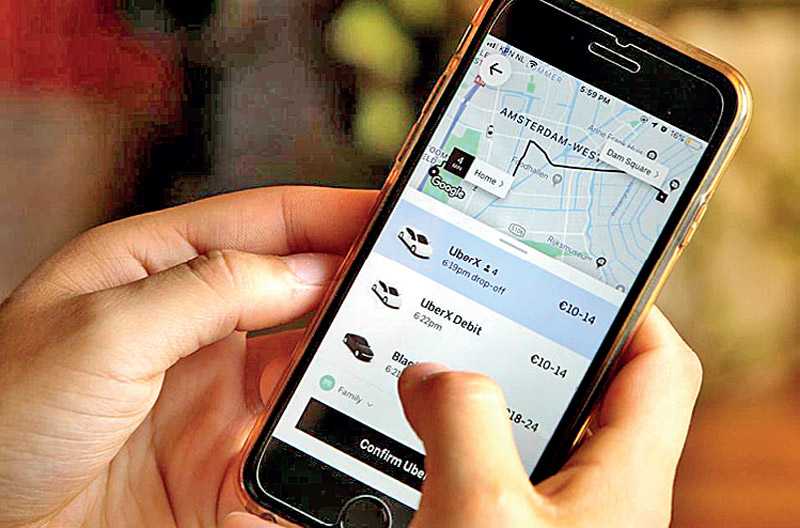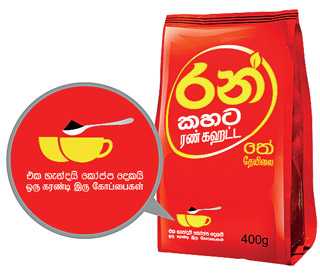Sunday Apr 20, 2025
Sunday Apr 20, 2025
Wednesday, 24 March 2021 00:00 - - {{hitsCtrl.values.hits}}

Uber’s proposition, ‘Reliable Convenience,’ informs you of the time and cost instantly
 |
| Sunshine Consumer Lanka General Manager – Marketing Farman Nizar |
 |
| Watawala Tea has successfully educated consumers to check the manufacturing date on the pack, rather than the expiry date |
 |
| Ran Kahata’s proposition is about more cuppage; any competitor claiming economy is indirectly challenged to meet its standard of blend efficacy
|
Brand strategy is central to business strategy to drive business performance and commercial impact. But today, the fastest growing organisations no longer think of brand positioning as a static, category-based, abstract construct to be checked and reviewed every so often. Instead, they move along an overall trajectory of purpose that brings the business, brand and customer closer than they’ve ever been. The idea that enduring competitive advantage can be created by repeatedly doing the same thing, no matter how efficiently, has disappeared forever. The age of brand positioning is drawing to an end.
Join us over the next few weeks and months as Sri Lanka’s top CMOs share their perspectives on The End of Positioning. In this article, Michel Nugawela asks Sunshine Consumer Lanka General Manager – Marketing Farman Nizar for his opinion on the ongoing relevance of positioning to establish a brand within a target market. The following are excerpts from the interview:
Has branding become out-of-date?
I believe the statement arises from the deep and dramatic changes we are witnessing around the world. Both business foresight and forecasts are being challenged by unprecedented volatility. Companies have strategically diminished their planning cycles to a confident line-of-sight, from three years to one year; some even operate with quarterly planning routines – just enough to see the immediate future without the fog.
In a context where technology is inspiring superior business performance, perhaps brand marketers have not had enough of a public conversation to reveal their challenges and triumphs in the VUCA world. How much can branding, brand names and reputation actually influence the shifting preferences of the millennial consumer? So the question centres around relevance.
Positioning is proof and a process — not an end-state
Conceptually, brand positioning is the journey of placing an idea in the minds of a select group of consumers. It’s a process – not a state – of identifying a specific benefit that a brand commits to offer and effectively deliver to win the customer’s loyalty. You can call it USP or POD, but in its simplest sense it is a promise – publically made and delivered. It is also the single biggest hook to differentiate the brand from its competitors. Importantly, positioning goes beyond the mere idea of a claimed difference, to engineering the business organisation and its processes to deliver this strategic advantage. Let’s take Uber’s proposition, which is ‘Reliable Convenience’. Uber lets you know the time and cost instantly. It tells you that you can be picked up in 10 minutes and reach your destination in 30 minutes by paying Rs 450. This clarity of information and commitment makes Uber stand out, and that’s why people use it.
Or take the category I work in – branded tea. Each of Sunshine Consumer’s three brands – Zesta, Watawala, and Ran Kahata – approach the market in three distinct ways to build and capture three different segments.
Watawala promises the freshest tea from the garden to the pack. Consumers usually check the expiry date before they purchase a pack of tea but Watawala has been very successful in educating and repeatedly reminding them to check the manufacturing date instead. Typically, Watawala packs in the trade would be one to two months fresh from the date of manufacture, so it provides an assurance that they are purchasing the most recently blended garden fresh teas.
Watawala’s proposition gives a clear strategic advantage in the market. The business is also engineered to deliver this advantage to the consumer each and every time, beginning with controlling inventory holding, to limited distributor stocks, to standard retail stocking limits for consumer-cum-trade promotions.
Positioning will endure because of human evolution and human diversity
There are two realities in the world that make positioning enduringly relevant. The first is human evolution and the second is human diversity.
As technology continues to impact and transform the world, it leads to new and emerging products, services, and experiences. Successive generations evolve to embrace the newer lifestyles that give birth to newer ecosystems. Consumers in these new cultures will experience new products and services, and form fresh views.
For example, the automotive industry has a long usage history that has helped it evolve to extraordinary scales. Vehicles are still used for the purpose of travel, but it’s astonishing how the industry has changed and grown globally during the last century. Whether it’s in the spaces of mechanical efficiency, driving comfort, super speeds, attractive appearance, durability, or purpose-led vehicles, the features are numerous and the birth of these attributes mirror the diverse and growing needs of consumers, while giving marketers a plethora of dimensions to differentiate their brands. Volvo has chosen safety, Porsche has chosen performance, and Mercedes has chosen luxury. So as a product category’s usage gets rooted in society, peoples’ discernment increases and marketers must make meaningful choices to bring value to a targeted group of consumers.
The second reality that makes positioning relevant is human diversity. People are different and so are their perceptions and preferences on all things, including what they buy. No brand can meet all the expectations of all consumers because people are so diverse and varied. Choices need to fit the perceptions and preferences of each consumer group.
Let me illustrate this with another example: when a competitor enters a monopoly category, it is possible to angle the brand solution by amplifying one dimension that appeals to one user segment. The example of Zesta’s BOPF variant, which appeals to the discerning tea drinker, offers a distinct experience in terms of taste and aroma owing to its 100% pure BOPF blend. This is very different to what the majority of Sri Lankans prefer, which is a strong kahata tea.
Brand strategy and brand positioning
Brand strategy is the company’s game plan for the brand to win in the market. It encapsulates business readiness, resource capabilities, expertise and processes that are necessary to execute the agreed plan for the future.
Brand positioning, on the other hand, is the process of identifying exactly which part of the business we are going to offer as an advantage to consumers, and thereafter communicating and ensuring it is delivered to them.
Let’s take the example of Ran Kahata, Sunshine Consumer’s economy brand, which has enjoyed the highest brand growth for the past four years. Its proposition is about more cuppage and is illustrated by the payoff ‘ekka handai, kope dekkai’ (‘every spoonful gives two cups of tea’). Any competitor claiming economy is indirectly challenged to meet this standard of blend efficacy.
In the same example, the brand strategy would involve leveraging many other business drivers to help the brand win in the market place and boost revenue or equity. These could include driving distribution in specific provinces for a particular SKU or changing the tea buying strategy for managing profitability; also the wider marketing mix decisions on the product, price and promotions.
Brand positioning is proof that the brand is not (yet) dead
Brand positioning is one of the most fundamental concepts, if not the most critical one, in branding. If an offering does not have a competitively superior value, there is no reason for a consumer to choose your brand. Indeed, brands in developing countries have the short term advantage of winning markets with infrastructural capabilities. However, this would be insufficient when real competition arrives.
Branding believes that solutions should be bought, not sold. It builds a business by developing competencies to deliver a compelling proposition that people want, and value offerings that make a difference to people. It is a discretionary demand-led philosophy that respects consumers utterly. Hence, meaningful differentials are a must for future success. If your business differential dies, then the brand dies and the business will dis-integrate.
Discover Kapruka, the leading online shopping platform in Sri Lanka, where you can conveniently send Gifts and Flowers to your loved ones for any event including Valentine ’s Day. Explore a wide range of popular Shopping Categories on Kapruka, including Toys, Groceries, Electronics, Birthday Cakes, Fruits, Chocolates, Flower Bouquets, Clothing, Watches, Lingerie, Gift Sets and Jewellery. Also if you’re interested in selling with Kapruka, Partner Central by Kapruka is the best solution to start with. Moreover, through Kapruka Global Shop, you can also enjoy the convenience of purchasing products from renowned platforms like Amazon and eBay and have them delivered to Sri Lanka.
Discover Kapruka, the leading online shopping platform in Sri Lanka, where you can conveniently send Gifts and Flowers to your loved ones for any event including Valentine ’s Day. Explore a wide range of popular Shopping Categories on Kapruka, including Toys, Groceries, Electronics, Birthday Cakes, Fruits, Chocolates, Flower Bouquets, Clothing, Watches, Lingerie, Gift Sets and Jewellery. Also if you’re interested in selling with Kapruka, Partner Central by Kapruka is the best solution to start with. Moreover, through Kapruka Global Shop, you can also enjoy the convenience of purchasing products from renowned platforms like Amazon and eBay and have them delivered to Sri Lanka.